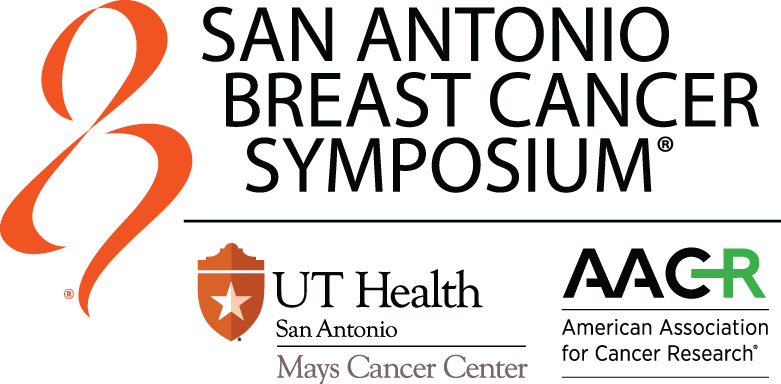
The advent of novel anti-HER2 therapies is not just improving treatment outcomes. These new targeted therapies are moving both pathologists and clinicians to rethink the basic concepts of HER2 breast cancers.
“For two decades, we have thought in terms of HER2+ and HER2- breast cancers based on widely accepted assays, cutoff points, and treatment guidelines,” said Kalliopi P. Siziopikou, MD, PhD, Professor of Pathology and Medicine and Director of Breast Pathology at Northwestern University Feinberg School of Medicine. “Our real emphasis was making sure that we didn’t miss any HER2+ tumors that could be treated with HER2-targeted agents. The field shifted when antibody-drug conjugates (ADCs) came to the market.
“Even if there are small amounts of HER2 expressed on the tumor cell surface, ADCs attach, release their payloads, and kill both the targeted tumor cells and adjacent tumor cells that may not express HER2. So instead of thinking only about the 15% of breast cancer patients who are HER2+ by our traditional assays, we now also need to think about the 45% to 55% of all breast cancer patients who have low, but detectable, levels of HER2 expression. This changes the way we approach how to evaluate and treat HER2 breast cancers.”
Dr. Siziopikou will co-moderate a special session on HER2-Low: A Separate Entity? on Wednesday, December 7, from 9:45 am – 11:00 am CT in Hall 3 with a focus on pathology. Co-moderator Adam Brufsky, MD, PhD, FACP, Professor of Hematology and Medical Oncology, University of Pittsburgh and Medical Director, Magee-Women’s Cancer Program and Co-Director of the Comprehensive Breast Cancer Center, UPMC Hillman Cancer Center, will focus on clinical care considerations.
Reaching consensus on what constitutes an HER2-low breast cancer involves both pathological and clinical factors, Dr. Siziopikou said. On the pathology side, David Rimm, MD, PhD, Anthony N. Brady Professor of Pathology and Professor of Medical Oncology, Director of Pathology, Director of the Yale Cancer Center, and Director of Yale Pathology Tissue Services, Yale University School of Medicine, will discuss the current HER2 assays and their utility in distinguishing between HER2-, HER2-low, and HER2+ cancers, potential cutoff points, new guidelines, and other pathologic considerations.
The clinical discussion revolves around whether recognizing and treating HER2-low breast cancers is both practical and likely to improve treatment approaches and outcomes. Sara Tolaney, MD, MPH, Chief of Breast Oncology, Susan F. Smith Center for Women’s Cancers and Associate Professor of Medicine, Harvard Medical School, in Boston, will argue that considering HER2-low cancers as a distinct entity has no significant clinical value or impact.
Giuseppe Curigliano, MD, PhD, Director, New Drugs and Early Drug Development for Innovative Therapies, European Institute for Oncology, Milan, Italy, will argue that HER2-low is a clinically important distinction that can play a deciding role in treatment decisions. As current and upcoming generations of anti-HER2 therapies become more tightly targeted and increasingly sensitive to ever-lower levels of HER2 expression, low levels of HER2 could become a useful clinical target for a growing number of breast cancer patients.
“Nobody knows for sure at this point,” Dr. Siziopikou said. “There are clinical trials in progress that will help answer the question, which is why it is so important to have this discussion at SABCS 2022.”
The prospect of being able to use new HER2-targeted therapies for the 45% to 55% of women who are currently classified as HER2- because their HER2 expression falls below current cutoffs is also attracting attention from breast cancer patients, their families, and caregivers. Patty Spears, BS, Scientific Research Manager and Patient Advocacy, University of North Carolina Lineberger Comprehensive Cancer Center will bring patient perspectives to the discussion.
“These new anti-HER2 agents are very effective, but they are not without side effects and are also very expensive,” Dr. Siziopikou said. “We don’t want to expose anyone to the side effects who is not going to benefit. And the financial burden of these new agents is not negligible. We need a full discussion of all these complex issues.”
HER2 LOW: A SEPARATE ENTITY SPECIAL SESSION — POSTERS
HER2–01: Clinical and molecular characteristics of HER2–low/zero early stage triple–negative breast cancer
HER2–02: HER2–low status is associated with worse clinical outcomes in hormone receptor–positive, HER2–negative advanced breast cancer patients treated with first–line cyclin–dependent kinase 4/6 inhibitors plus endocrine therapy
HER2–04: Prevalence of HER2–low among metastatic breast cancer patients and their outcomes compared to HER2 IHC 0
HER2–05: Comprehensive genomic characterization of HER2–low breast cancer
HER2–06: Outcome analysis of HER2–zero or HER2–low hormone receptor–positive (HR+) breast cancer patients – characterization of the molecular phenotype in combination with molecular subtyping
HER2–07: Genomic characterization of primary and metastatic HER2–low breast cancers
HER2–08: Molecular characterization of HER–2 low patients identifies basal–enriched subset with poor clinical outcomes in real–world data
HER2-09: Multiomics Profiling Characterizes Distinct HER2-low Breast Cancer Subgroups in the East Asian Population
HER2–10: Dynamics of HER2–low expression in triple–negative breast cancer
HER2–11: Epidemiology and prognosis of HER2–low breast cancer (BC) in the National Cancer Data Base (NCDB)
HER2–12: Genomic and transcriptomic landscape of HER2–low breast cancer
HER2–13: Proficiency assessment of HER2–low breast cancer scoring with the Ventana PATHWAY 4B5 and Dako HercepTest HER2 assays and the impact of pathologist training
HER2–14: HER–2 low status in early-stage invasive lobular carcinoma of the breast: associated factors and outcomes in an institutional series
HER2–15: Retrospective Study to Estimate the Prevalence and Describe the Clinicopathological Characteristics, Treatment Patterns, and Outcomes of HER2–Low Breast Cancer
HER2–16: Inter–lesion heterogeneity of HER2–status in metastatic breast cancer: possible implications for treatment with anti–HER2 antibody–drug conjugates
HER2–17: Novel quantitative HER2 assay for determining dynamic HER2 expression in the HER2 IHC 0 “Ultra–Low” setting: Implications for precision therapy in HER2– breast cancer
HER2–18: Determination of HER2–low status in tumors of patients with unresectable and/or metastatic breast cancer in DESTINY–Breast04
HER2–19: Impact of HER2 low status on clinical outcomes in participants with 1–3 positive lymph nodes, HR+/HER2– breast cancer with recurrence score

